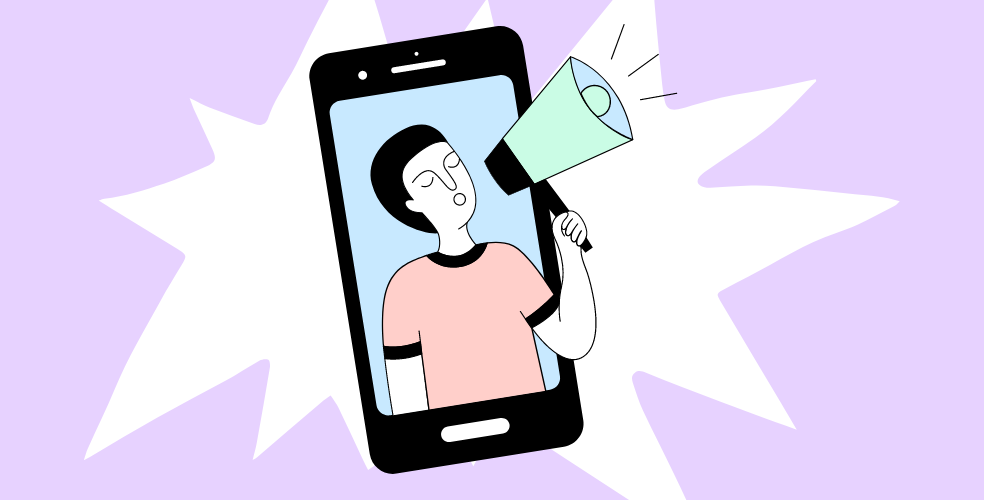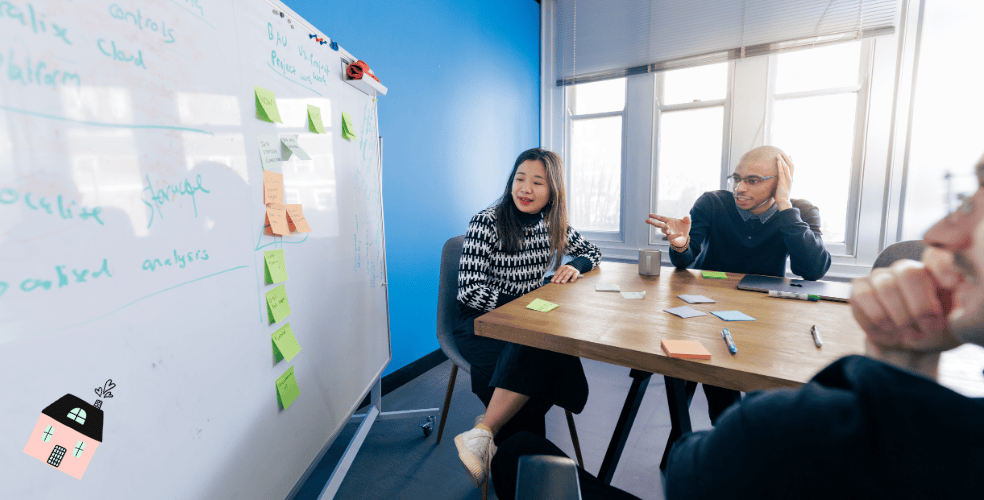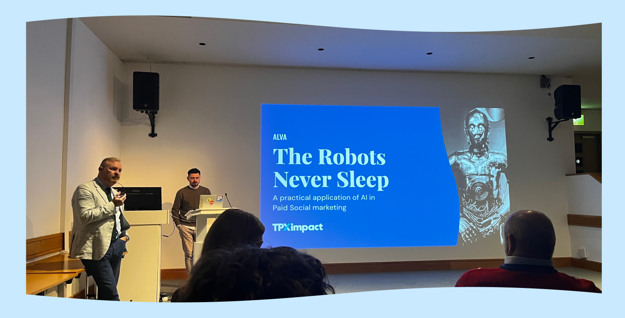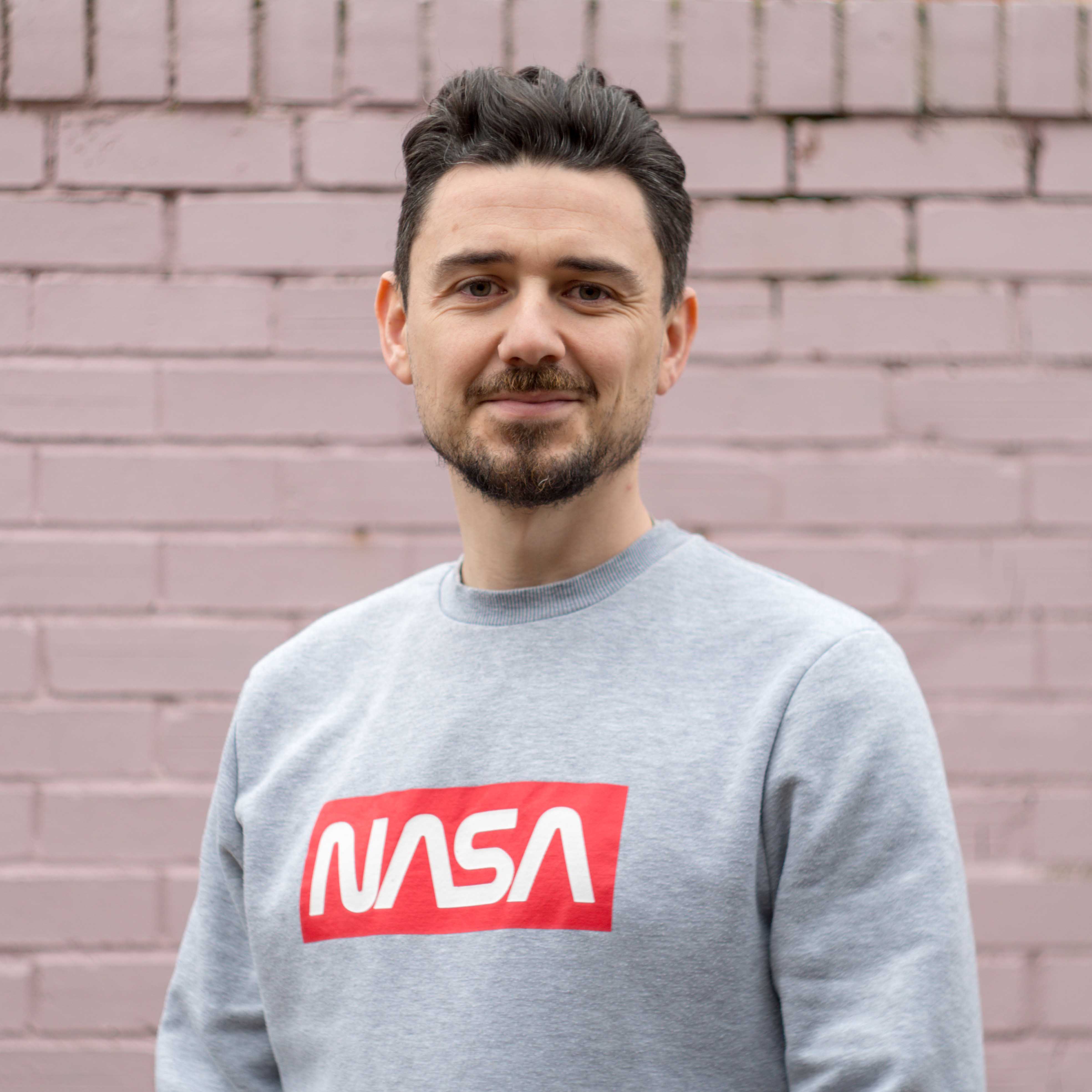In December, I had the privilege of speaking at the ALVA Heads of Marketing Forum at the amazing National Maritime Museum. My whistle-stop talk focused on the transformative role of AI in marketing, with thoughts on how that could apply to the cultural, membership and visitor sectors. I’ve compiled a summary of that talk, sharing how we’re keeping ourselves at the forefront of AI and marketing and how our approach seeks to cut through the fads to find the results.
The rise of AI in marketing
In today's digital world, the amalgamation of digital marketing and artificial intelligence is revolutionising how businesses engage with their audience. As we witness unprecedented digital advancements, marketers increasingly acknowledge the significance of AI technologies in their strategies.
2023 brought digital marketing and AI together in a more abrupt way than through a gradual process. As we move into 2024, this relationship is more likely to strengthen as we ditch the fads and discover the hidden gems.
If you thought the intersection of AI and marketing was a brief trend, it's time to reconsider; we’re in it for the long haul.
Working smarter
Over the years, our digital marketing team has successfully assisted various organisations in amplifying their digital channel income. Take the case of Fauna & Flora; from a non-digital fundraising approach in 2020, we’ve worked with them in partnership to progress to a point where their digital campaigns generate £85k per month in donation revenue. This recently led us to ask ourselves:
"Could AI help us achieve these same results using similar approaches but in a shorter timeframe?"
In late 2023, we initiated a pilot integrating ChatGPT with Revealbot. If this article was of any interest, I assume you already know what ChatGPT is, but just in case - ChatGPT, developed by OpenAI, is an advanced language model designed to generate human-like text (a form of Natural Language Processing, NLP for short). Revealbot is an AI-driven ads automation tool that expedites achieving desired outcomes by providing customisable automation rules for paid digital channels.
This is very much at the cutting edge of AI in Paid Social approaches, so here we’ll be discussing the ‘how’ of what we’re trialling, and we’ll hopefully bring you an update on the results in due course.
How to train your chatbot
Our strategy involves training ChatGPT to generate a high volume of effective ad copy, coupled with an eye-catching, brand-consistent creative template built to accommodate carrying ad unit specs and produced by our amazing Creative Studio. The ChatGPT model is trained on Product, Persona, Promotion, and Brand Info, guided by Templates and Wording Guidelines. This allows us to do one of two things with far greater speed.
First off, write high-quality briefs that capture the organisational background, tone of voice (ToV), winning themes, etc. Here are some example prompts:
-
Using everything you know about our organisation, produce a copy brief for a copywriter, including Facebook Ads, Google Search Ads, landing page copy, and two onboarding emails.
-
Using everything you know about our organisation, produce a creative brief for a design agency to include Facebook Static Ads in 1:1 and 9:16 formats, a Spotify Audio ad script, and landing page visuals.
-
Consider some tests we might run during this campaign using everything you know about our organisation.
And secondly, it allows us to produce copy directly. Here are some example prompts you can try:
-
Using everything you know about our organisation, produce copy for 20 different Facebook Ads targeted at Persona X during their Discovery stage of awareness. Include Headline, Body and Description. For the Body copy, do not exceed 300 characters. Feel free to suggest variants that include emojis. Output the suggestions in a table format.
-
I have a hypothesis that focussing on the time sensitivity of the offer (i.e. order before 12th Dec to guarantee delivery) will produce more results than focussing on the benefits of the membership.
-
Produce copy for 10 different Facebook Ads that would test this hypothesis. Explain why they are suitable for this test. Include Headline, Body Description, etc.
The evolving role of an ads copywriter
This could be an entire blog in itself, but the point to stress is that an NLP does not replace a copywriter in this process; it’s more the case that this role is now evolving in its shape.
An NLP is only as good as the information it is trained on, and often a brilliant starting point for ad creative is the landing page the ad is pointing to. This needs to be well-crafted and emotive yet succinct, and the best results come from people here. Other great sources are emails producing high response rates, blog articles that are getting a lot of visitors, or other ads that are working well or have worked well in the past.
Similarly, when an NLP like ChatGPT provides its outputs, that isn’t the end of the process - in our case, the ads copywriter becomes more of a copy editor; however in the time that it took to write ten ads from scratch, it’s possible to review and amend thirty or more.
Scaling up
Revealbot allows us to set performance targets on the channels we deploy, enabling the automation of rules like pausing ads or adjusting budgets based on these targets. By combining ChatGPT-generated copy and visuals from our branded templates, we introduce a higher volume of creative content into our campaigns. These are rotated, paused, or promoted based on business-aligned goals.
We continually adapt our campaigns by feeding the top performers back into the ChatGPT model to generate new variants and tests. This iterative cycle is key to our approach.
Essentially, our audience’s actual responses to our creative are helping to iterate what we output, as opposed to starting with research-driven assumptions, and it’s a new way of working for us.
What’s the next step for you?
Integrating AI in marketing is not just a fleeting trend but a transformative shift in how digital marketing operates. Our journey with Fauna & Flora and many others, evolving from traditional methods to generating significant donation revenue through digital campaigns, exemplifies the foundation of this evolution. By harnessing AI for tasks such as generating ad copy at scale and automating campaign management, dynamic budget levels and rotation, we can work smarter and more efficiently and hopefully achieve results in shorter time frames.
The training of ChatGPT in close alignment with a brand's needs and the strategic use of Revealbot for campaign management reflects our forward-thinking approach. This innovative strategy speeds up the creative process and aligns it more closely with self-selective audience responses, marking a significant departure from research-driven assumptions, and is something we’re excited to continue testing.
For you as the reader, this is likely to be one of many articles you read at the start of 2024 discussing the application of AI in this space. The questions that may be most important for you to answer are not which tactics to employ, but more so:
- How is your team set up for this change?
- Is the organisational ambition to be a first-mover or a close follower?
- Are we ready for the advanced, or do we still need to overcome some of the fundamentals?
Wherever you are on your marketing transformation journey, we’re always around to lend some friendly advice, so feel free to reach out to discuss your needs further.

Using large language models to validate a chatbot’s response
In the third of our large language model series, we explore how LLMs can be used to validate a chatbot’s response.
Read more
Planning reform: simplify, standardise, and engage
How we can streamline planning with clarity, consistency, and appropriate citizen input to boost development and hit housing targets.
Read moreOur recent insights
Transformation is for everyone. We love sharing our thoughts, approaches, learning and research all gained from the work we do.

Planning reform: simplify, standardise, and engage
How we can streamline planning with clarity, consistency, and appropriate citizen input to boost development and hit housing targets.
Read more
Visual facilitation and thinking with the Office for National Statistics
A sneak peek at our visual facilitation training with ONS, sketching, simplifying concepts, and applying visual thinking in complex contexts.
Read more
Building agile mindsets in organisations
How to create a culture where agile working is at the heart of your projects.
Read more

